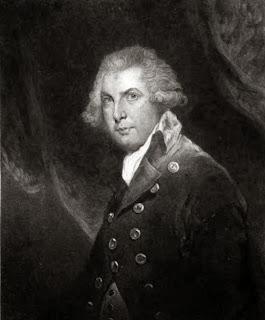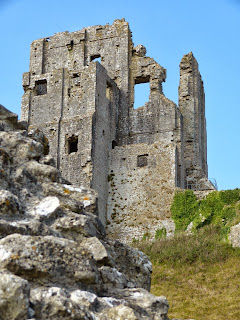 |
| The International Living History Fair I am talking to Joanna Tyrrell of Embellished |
A re-enactors’ market
Our visit was a reconnaissance mission: we had never been to one of these fairs before and were interested to find out what was there. The answer was obvious even before we walked through the entrance – we had come to a gathering of enthusiasts. The fair consisted of a wide range of different exhibitors ready to equip the historical re-enactor with anything from a full set of armour to historically correct footwear, from a medieval dress to beautiful hand-made buttons. Some items were ready to be bought and taken home, eg buttons, pockets, books, magazines, jewellery and material, whilst others, eg armour or a Georgian riding habit, had to be commissioned or contact details taken for a later time.
Enthusiastic experts
The real benefit of the fair was the drawing together of historical experts from lots of different fields. These people were there, not only to sell their wares, but to talk about their areas of expertise. Being a Georgian and Regency enthusiast, I had no intention of buying a suit of armour, but I had a fascinating talk with an armourer who explained how he had replicated pieces of antique armour to go on display at the Royal Armouries.
Joanna Tyrrell of Embellished shared with me her knowledge of the history of buttons and allowed me to try on her pockets. (My newsletter this month will include a photo of me wearing the pockets. I had no idea how long they were!)
Fortunately for me, Izabela Pitcher of Prior Attire was dressed in her gorgeous Regency riding habit on the day I visited. I was fascinated to learn that she rides side-saddle in her Regency splendour and she explained how today’s side-saddles are much safer than they were in Regency times, when there was a real risk of coming out of your saddle when jumping fences. I fell in love with the pictures of Izabela’s 1790s dress that seemed just the sort of dress that the Duchess of Devonshire would have worn. I had better start saving…
 |
| Prior Attire at the International Living History Fair |
We had an enjoyable afternoon at the fair. I thought that the entrance price was a bit expensive for what was there, but if seen as a ticket to the stallholders’ expertise, it was better value. I would have liked to have seen more Georgian era stalls, but I am a bit narrow minded! Even with the “have a go” archery corner, I don’t think the event was really suitable for children.
But if you are a historical re-enactor or would like to become one, then the International Living History Fair is a great place to go.
For details of the next fair, see the International Living History Fair website.



























